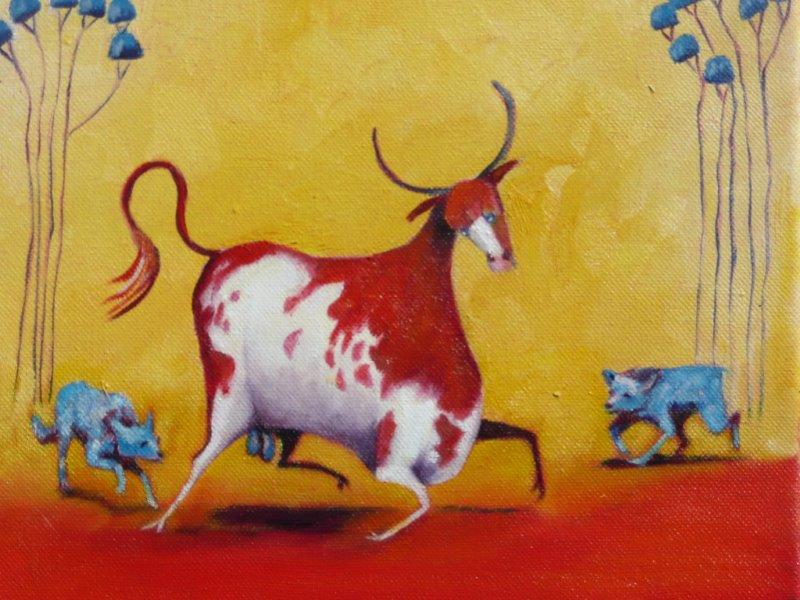
In the early 1800′s, the first settlers, having limited availability of labour to control the large herds of cattle that grazed on unfenced properties and rugged bushland, set about to create a breed of dog to assist in mustering and moving wild cattle. The principal requirement of this breed of dog was that it be strong, possess great stamina, and be able to bite. In 1840, a landowner by the name of Thomas Hall from New South Wales, imported two smooth-haired blue merle Highland Collies from Scotland. Although these were considerably better than the common collie, they proved to be less suitable for work with fractious cattle in the new, hostile and unaccustomed environment as they displayed some of the heading traits that were undesirable. Hall experimented with native Dingo blood infusions; with the resulting litters becoming known as “Hall’s Heelers”. As the Dingo trait is to creep silently from behind and bite, the pups followed this style of heeling, nipping at the fetlocks of the stragglers until they re-joined the herd. Immediately the cattle dog nipped it would flatten itself against the ground to avoid any kick a stubborn bovine might suddenly lash out. This dog was welcomed by grazier and drover alike for their ability to handle wild cattle, their stamina to travel great distances over all types of terrain, and their endurance in extremes of temperature. The physical appearance of the progeny closely resembled small, thickset Dingos, with their heads tending to be rather broad of skull, bluntly wedge shaped, with brown glinty eyes and pricked ears with colour being either red or blue merle. Hall continued his experimental breeding until his death in 1870. Word of Hall’s new and superior Cattle Dog variety soon became widespread. Demand for the young stock spread rapidly throughout New South Wales, eventually reaching Northern Queensland. Around this time another landowner, George Elliot of Queensland was experimenting with the crossing of the Dingo and Collie, producing some excellent workers. He entered into his diary on the 12th of February 1873 that his two month old quarter Dingo worked so silently on cattle, he called her “Munya”, which is aboriginal for silent. In the early 1870′s these cattle dogs found their way to the Sydney markets and it was here that some breeders decided to refine Hall’s Heelers. Australian Cattle Dog, commonly known as the Blue Heeler, the Australian Heeler, or the Queensland Blue has developed into one of the most popular breeds of dog in Australia today.
